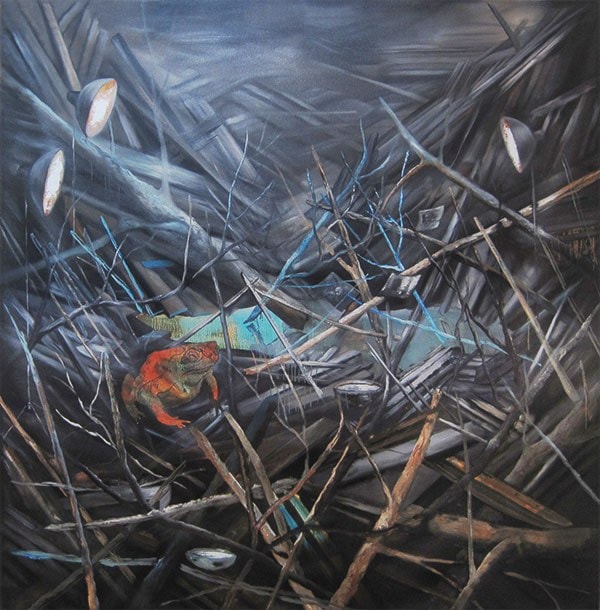In Canada art students are taught in school about the Canadian artists who came before them—Paul Kane, Cornelius Krieghoff, the Group of Seven, and Emily Carr, for example. Painted images by all these forebears form the visual compost from which young artists sprout and flourish.
Eventually artists must decide on their stances on things, for example, about landscape painting—a huge part of Canada’s visual heritage—do they wish to engage with it at all, or completely ignore it. All our historical images and related narratives form a kind of cultural backdrop against which we define ourselves, and it becomes so familiar that we can sometimes forget that it is there. Thus it can become hard for us to imagine what it would be like to be an artist growing up in another part of the world, with a totally different artistic heritage.
Jeroen Witvliet, the artist featured in the current solo exhibition at the Kelowna Art Gallery, provides food for thought along this line, as he is Dutch by birth and upbringing, and therefore from a completely different artistic heritage. Witlviet grew up in a village next to the city of Rotterdam, and his paintings draw from Dutch artists of the past–Bruegel, Bosch, Rembrandt, and, of course, Vincent van Gogh. Imagine for a moment the amazing privilege but also onerous burden, of inheriting van Gogh, to choose one example, as your forefather? How would that influence the work you made as an artist? Maybe you would end up doing paintings something like Jeroen Witvliet’s—dark, brooding, intense, and enigmatic, but also finely wrought, beautiful, and mesmerizing. People familiar with historical Dutch painting will sense echoes of the dark, brooding mood in old master Dutch paintings sounding in Witvliet’s work.
Unlike the works of the old masters, however, Witvliet’s output generally is often on a large scale—17 of the 30 works in the current show are mostly over six feet high. Intriguingly, thirteen paintings are tiny, only 9 by 12 inches in size. These small recent works depict clasping hands, tattooed wrists, and in one case, a human skull. The larger paintings, many from the artist’s Wayfarer series, are of bunches of twigs and branches with objects interspersed, or in four huge examples, lit stadiums seen at night. Almost all works are painted in black and white, with some of the Wayfarer canvases having licks of orange and blue, only in touches. As with historical Netherlandish painting, much of the symbolism is hidden, and we can only guess at what some of the items depicted mean to the artist: a toad, a pair of antlers, a dog painted in blue, for instance.
Six of the works have been moved from the walls out into the middle of the gallery space and are supported with wooden trusses to keep them upright. In doing this the artist wants to emphasize our own bodily, physical experience of art, and not have viewers just see the works with our eyes and in our heads.
Jeroen Witvliet has lived in Canada since the late 1990s, and finished his MFA at the University of Victoria in 2014 His work is provocative and fascinating, and provides a chance for Kelowna gallery-goers to engage with work by a painter who wants his work to move beyond painting.
Jeroen Witvliet: Wayfarer will remain on view at the Kelowna Art Gallery until Oct. 18.
